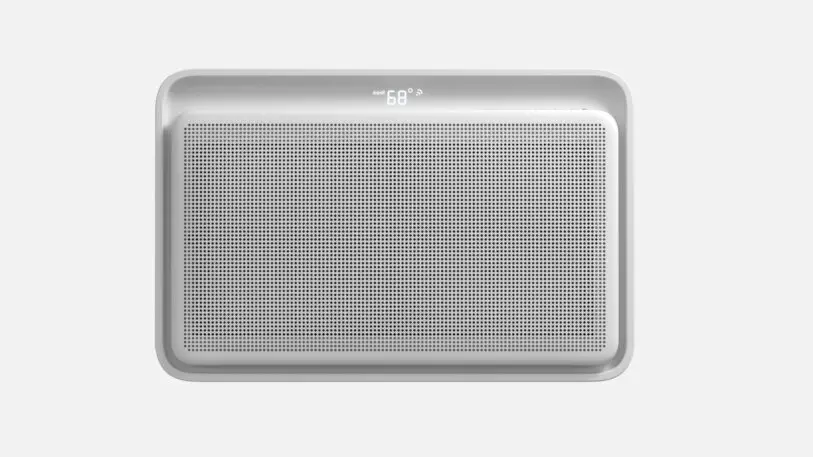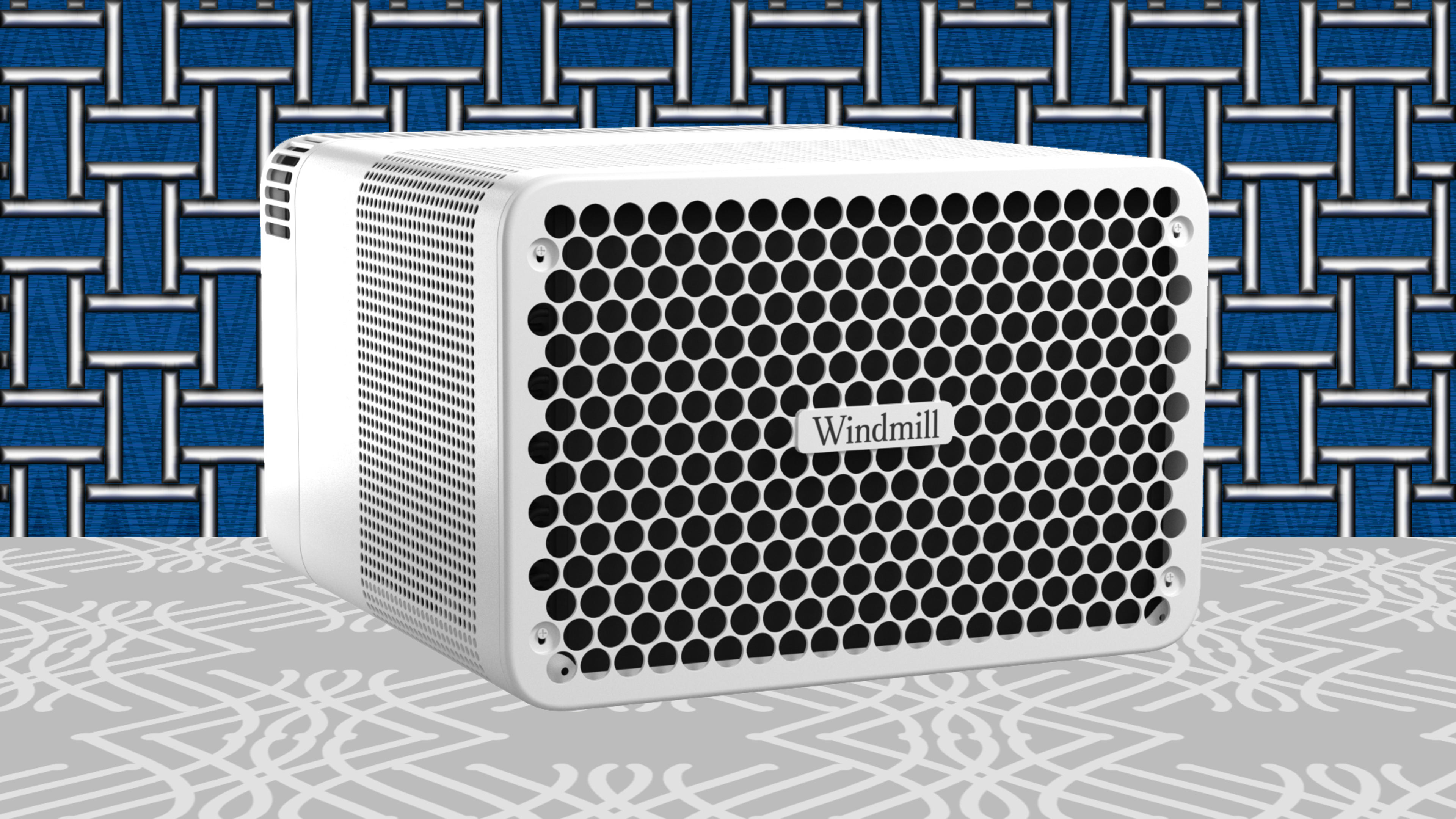Windmill wants to solve one of summer’s most intractable problems: the blight of ugly air conditioners. The New York-based startup launched in 2020 with a 10,000-person waitlist for its $415 smart AC, a sleek window unit that has more in common, design-wise, with Apple’s HomePods than the hulking air conditioners of yore. The first run of units sold out within 48 hours.
This April, Windmill’s wifi-enabled air conditioners got a mini makeover with the reveal of a smaller $365 unit—a 6,000-BTU AC that cools up to 250-sq ft., which makes it ideal for a city apartment or office space. (Compared to the original 8.3k BTU $415 unit that we reviewed last year.) The line expansion arrives alongside the announcement of a $10 million fundraising round and the addition of Walmart to the direct-to-consumer brand’s list of big-box retailers, which already includes Home Depot and P.C. Richard & Son.

The AC they came up with is matte white with soft, curved edges and cane-like grates across its front. It can be controlled and programmed for three cool and three fan settings via the Windmill app, a small remote, or on the machine’s top buttons: a white LED digital display that fades away after it’s been set.

It took less than 30 minutes to get my 60-pound Windmill AC through the door and into my tiny brownstone window. It’s now humming along and looking great. The unit is exceptionally quiet, and I haven’t had any issues with it drowning out music or TV or when I’m speaking on a Zoom call. It pumps out 8,300 BTU, which cooled my extremely sunny (read: sweltering) 250-square-foot, split-level living room just fine within a few minutes. (It’s recommended for rooms up to 350 square feet.)
Air blows from the top of the unit, which, Mike Mayer explains, comes at a 45-degree angle for more efficient circulation. “If you think about it, most units are [installed] in windows at waist height,” he says. “We did a ton of customer research in the beginning and people would complain about air blowing in their faces when they’re on their couch or directly onto their bodies in bed.” Pushing cold air up and out allows it to fall and circulate, rather than dropping straight to the floor.

The brand isn’t the first to emerge with a clever, direct-to-consumer solution to the old, clunky AC. A startup called July introduced simplified, stylish units that start at $479 and come with interchangeable front panels and app-controlled tech in 2020. Meanwhile, consumer brands, including Frigidaire, Toshiba, and Midea, have also met millennial demand: reimagining their machines with sleek makeovers and smart connectivity.

So, do you need a Windmill AC? If space is a premium, you’ll find that Windmill is small, fits into a tiny apartment window (install requirements are a window that opens 14 inches with a width between 23 and 37 inches), and packs a punch without disrupting the room’s aesthetic flow. If space isn’t a premium, you’ll still find that the device boasts several pros: simplified filter maintenance, easy-to-program settings, and an accessible price point.
As someone who has had a blanket hiding her hideous portable AC unit for the better half of the year, I can attest that it’s easy to use, easy on the eyes, and makes every other air-conditioning unit look and feel outdated. I told myself I would get through this story without calling the Windmill AC “cool”—but it’s most definitely not not cool.
Fast Company’s Recommender section is dedicated to surfacing innovative products, services, and brands that are changing how we live and work. Every item that we write about is independently selected by our editors and, whenever possible, tested and reviewed. Fast Company may receive revenue from some links in our stories; however, all selections are based on our editorial judgment.
Recognize your brand’s excellence by applying to this year’s Brands That Matter Awards before the early-rate deadline, May 3.
